802.15.4/ZigBee/RF modules
Waspmote integrates the Digi's XBee modules for communication in the ISM (Industrial Scientific Medical) bands.
These modules communicate with the microcontroller using the UART0 or UART1 at 115200 bps.
There are several possible XBee modules distributed by Libelium for integration in Waspmote.
| Radio version | Frequency | Transmission power | Sensitivity | Range* |
|---|---|---|---|---|
| XBee 3 802.15.4 EU | 2.4 GHz | 10 dBm | -100 dBm | 750 m |
| XBee 3 802.15.4 | 2.4 GHz | 18 dBm | -100 dBm | 1600 m |
| XBee-PRO DigiMesh | 2.4 GHz | 18 dBm | -100 dBm | 1500 m |
| XBee ZigBee 3 | 2.4 GHz | 8 dBm | -102 dBm | 1200 m |
| XBee 868LP | 863 - 870 MHz | 14 dBm | -106 dBm | 8.4 km |
| XBee 900HP US | 902 - 928 MHz | 24 dBm | -110 dBm | 15.5 km |
| XBee 900HP BR | 902 - 906.8 MHz 915.6 - 928 MHz | 24 dBm | -110 dBm | 15.5 km |
| XBee 900HP AU | 915.6 - 928 MHz | 24 dBm | -110 dBm | 15.5 km |
*To determine your range, perform a range test under your operating conditions
XBee 3 802.15.4
| Radio version | Frequency | Transmission power | Sensitivity | Range* |
|---|---|---|---|---|
| XBee 3 802.15.4 EU | 2.4 GHz | 8 dBm | -103 dBm | 1200 m |
| XBee 3 802.15.4 | 2.4 GHz | 18 dBm | -100 dBm | 3200 m |
*To determine your range, perform a range test under your operating conditions
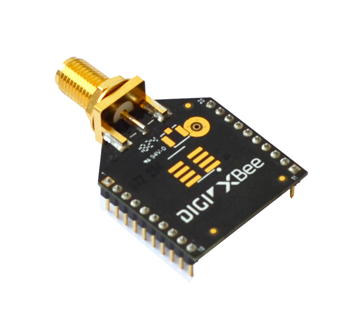
The frequency used is the free band of 2.4 GHz, using 12 channels with a bandwidth of 5 MHz per channel.

| Channel Number | Frequency |
|---|---|
| 0x0C -- Channel 12 | 2.405 -- 2.410 GHz |
| 0x0D -- Channel 13 | 2.410 -- 2.415 GHz |
| 0x0E -- Channel 14 | 2.415 -- 2.420 GHz |
| 0x0F -- Channel 15 | 2.420 -- 2.425 GHz |
| 0x10 -- Channel 16 | 2.425 -- 2.430 GHz |
| 0x11 -- Channel 17 | 2.430 -- 2.435 GHz |
| 0x12 -- Channel 18 | 2.435 -- 2.440 GHz |
| 0x13 -- Channel 19 | 2.440 -- 2.445 GHz |
| 0x14 -- Channel 20 | 2.445 -- 2.450 GHz |
| 0x15 -- Channel 21 | 2.450 -- 2.455 GHz |
| 0x16 -- Channel 22 | 2.455 -- 2.460 GHz |
| 0x17 -- Channel 23 | 2.460 -- 2.465 GHz |
The XBee 3 __802.15.4 modules comply with the standard IEEE 802.15.4 which defines the physical level and the link level (MAC layer). The XBee modules add certain functionalities to those contributed by the standard, such as:
- Node discovery: certain information has been added to the packet headers so that they can discover other nodes on the same network. It allows a node discovery message to be sent, so that the rest of the network nodes respond indicating their data (Node Identifier, @MAC, @16 bits, RSSI).
- Duplicated packet detection: This functionality is not set out in the standard and is added by the XBee modules.
The classic topology of this type of network is a star topology, as the nodes establish point-to-point connections with brother nodes through the use of parameters such as the MAC or network address.
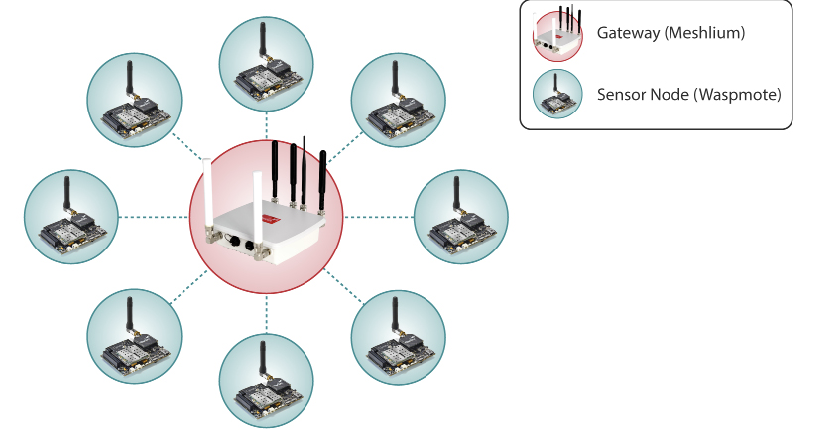
Regarding the transmission power, it can be adjusted to several values depending on the radio version:
| Parameter | XBee 3 802.15.4 | XBee 3 802.15.4 EU |
|---|---|---|
| 0 | 10 dBm | -3 dBm |
| 1 | 12 dBm | -3 dBm |
| 2 | 14 dBm | 2 dBm |
| 3 | 16 dBm | 8 dBm |
| 4 | 18 dBm | 10 dBm |
Related API libraries: WaspXBeeCore.h, WaspXBeeCore.cpp, WaspXBee802.h, WaspXBee802.cpp
All information about their programming and operation can be found in the 802.15.4 Networking Guide.
All the documentation is located in the Development section in the Libelium website.
XBee ZigBee
We commercialized the XBee ZigBee S2D until July 2019; from this moment we offer the new XBee ZigBee 3, with similar features a full retro-compatiiblity.
| Radio version | Frequency | Transmission power | Sensitivity | Range* |
|---|---|---|---|---|
| XBee ZigBee 3 | 2.4 GHz | 8 dBm | -103 dBm | 1200 m |
*To determine your range, perform a range test under your operating conditions
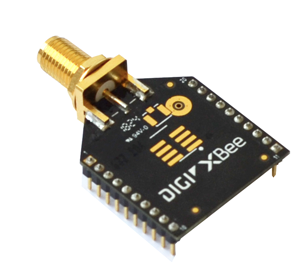
As the ZigBee standard is supported in the IEEE 802.15.5 link layer, it uses the same channels as described in the previous section, with the peculiarity that the XBee ZigBee 3 model limits the number of channels to 16 and 13 each.
The XBee ZigBee 3 modules comply with the ZigBee 3.0 standard. These modules add certain functionalities to those contributed by ZigBee, such as:
- Node discovery: some headings are added so that other nodes within the same network can be discovered. It allows a node discovery message to be sent, so that the rest of the network nodes respond indicating their specific information (Node Identifier, @MAC, @16 bits, RSSI).
- Duplicated packet detection: This functionality is not set out in the standard and is added by the XBee modules.
The topologies in which these modules can be used are: star and tree.

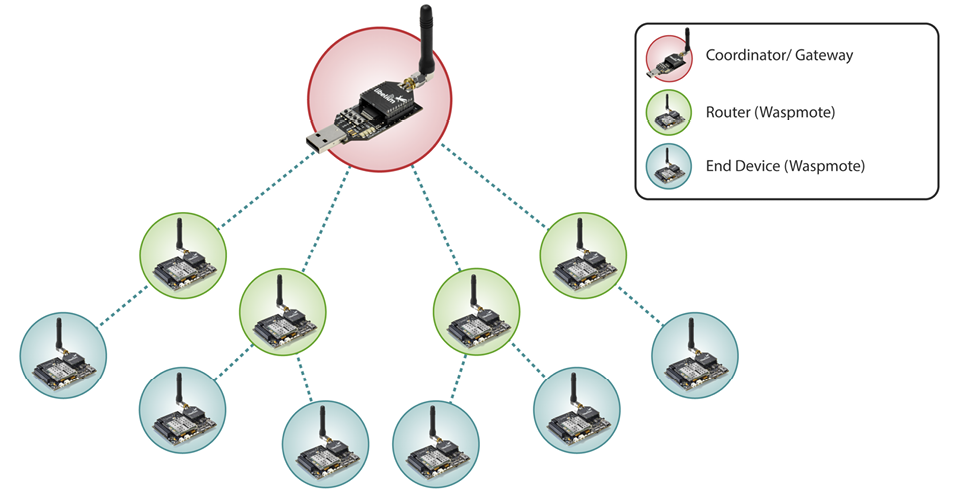
Related API libraries: WaspXBeeCore.h, WaspXBeeCore.cpp, WaspXBeeZB.h, WaspXBeeZB.cpp
All information about their programming and operation can be found in the ZigBee Networking Guide.
All the documentation is located in the Development section in the Libelium website.
XBee 868LP
| Radio version | Frequency | Transmission power | Sensitivity | Range* |
|---|---|---|---|---|
| XBee 868LP | 863 - 870 MHz | 14 dBm | -106 dBm | 8.4 km |
*To determine your range, perform a range test under your operating conditions
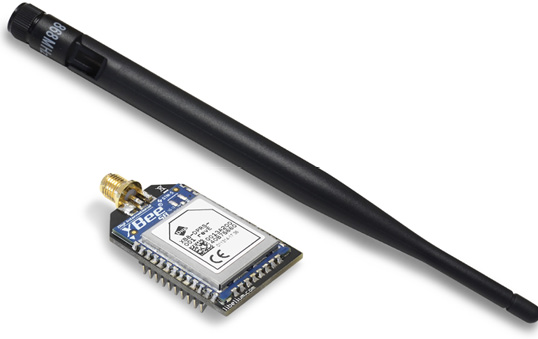
{warning.fa-dot} The XBee 868 MHz module is provided with 4.5 dBi antenna, which enables maximum range.
The frequency used is the 868 MHz band, using 30 software selectable channels. Channels are spaced 100 kHz apart. The transmission rate is 10 kbps.
The classic topology for this type of network is a star topology, as the nodes can establish point-to-point connections with brother nodes through the use of the MAC address.
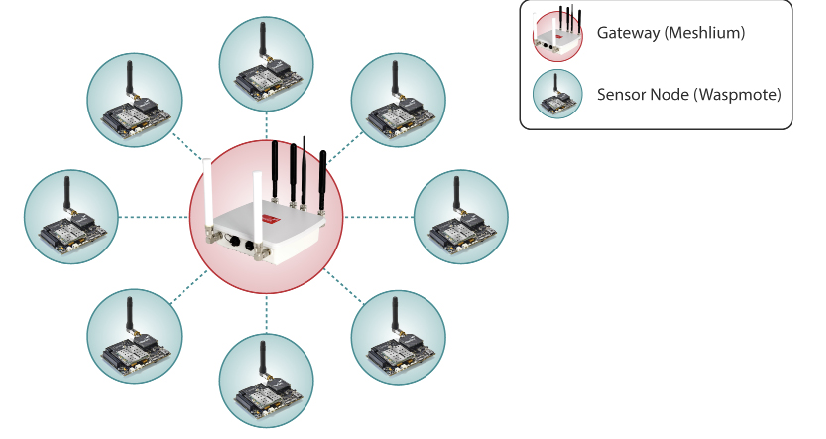
Regarding the transmission power, it can be adjusted to several values:
| Parameter | XBee 868LP |
|---|---|
| 0 | 3 dBm |
| 1 | 7 dBm |
| 2 | 10 dBm |
| 3 | 12 dBm |
| 4 | 14 dBm |
Related API libraries: WaspXBeeCore.h, WaspXBeeCore.cpp, WaspXBee868LP.h, WaspXBee868LP.cpp
All information about their programming and operation can be found in the 868 LP Networking Guide.
All the documentation is located in the Development section in the Libelium website.
XBee-PRO 900HP
| Radio version | Frequency | Transmission power | Sensitivity | Range* |
|---|---|---|---|---|
| XBee-PRO 900HP US | 902 - 928 MHz | 24 dBm | -110 dBm | 15.5 km |
| XBee-PRO 900HP BR | 902 - 906.8 MHz 915.6 - 928 MHz | 24 dBm | -110 dBm | 15.5 km |
| XBee-PRO 900HP AU | 915.6 - 928 MHz | 24 dBm | -110 dBm | 15.5 km |
*To determine your range, perform a range test under your operating conditions
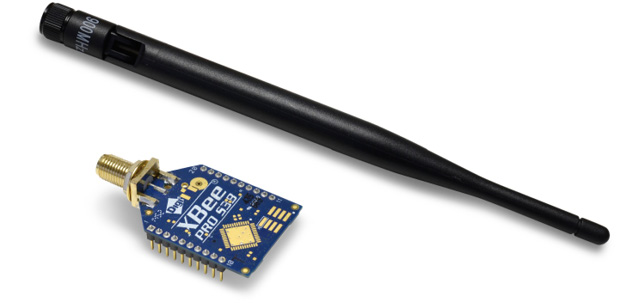
The frequency used is the 900 MHz band, using 64 software selectable channels. Channels are spaced 400 kHz apart. The transmission rate is 10 kbps. There are different versions of the XBee 900HP: USA & Canada, Brazil and Australia.
The different versions differ mainly in the available channels, which are hard-coded in the XBee. Be aware that it is not possible to change from one version to other with just a firmware change. According to the country where the user is located, a different version must be chosen.
The classic topology for this type of network is a star topology, as the nodes can establish point-to-point connections with brother nodes through the use of parameters such as the MAC address or that of the network.

API libraries: WaspXBeeCore.h, WaspXBeeCore.cpp, WaspXBee900HP.h, WaspXBee900HP.cpp
All information about their programming and operation can be found in the 900 __HP Networking Guide.
All the documentation is located in the Development section in the Libelium website.
XBee-PRO DigiMesh
The XBee-PRO 802.15.4 modules can use an optional firmware called DigiMesh. So the modules can create mesh networks instead of the usual point-to-point topology. This firmware has been developed by Digi in order to allow the modules to sleep, synchronize themselves and work on equal terms, avoiding the use of node routers or coordinators that have to be permanently powered on. Characteristics of the implemented protocol:
- Self healing: any node can join or leave the network at any moment.
- All nodes are equal: there are no father-son relationships.
- Silent protocol: reduced routing heading due to using a reactive protocol similar to AODV (Ad hoc On-Demand Vector Routing).
- Route discovery: instead of keeping a route map, routes are discovered when they are needed.
- Selective ACKs: only the recipient responds to route messages.
- Reliability: the use of ACKs ensures data transmission reliability.
- Sleep modes: low energy consumption modes with synchronization to wake at the same time.
The classic topology of this type of network is mesh, as the nodes can establish point-to-point connections with brother nodes through the use the MAC address doing multi-hop connections when it is necessary.

| Radio version | Frequency | Transmission power | Sensitivity | Range* |
|---|---|---|---|---|
| XBee-PRO DigiMesh | 2.4 GHz | 18 dBm | -100 dBm | 1500 m |
*To determine your range, perform a range test under your operating conditions
The XBee DigiMesh modules share the hardware module with the XBee-PRO 802.15.4. So it is possible to change the firmware of this kind of modules from one to another and vice versa (this can be done with a Gateway). For this reason, the characteristics related to the hardware are the same.
The XBee DigiMesh modules are based on the standard IEEE 802.15.4 that supports functionalities enabling mesh topology use.
Related API libraries: WaspXBeeCore.h, WaspXBeeCore.cpp, WaspXBeeDM.h, WaspXBeeDM.cpp
All information about their programming and operation can be found in the DigiMesh Networking Guide.
All the documentation is located in the Development section in the Libelium website.